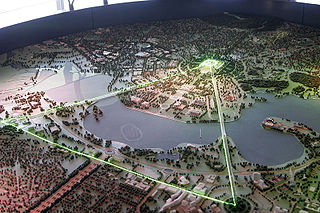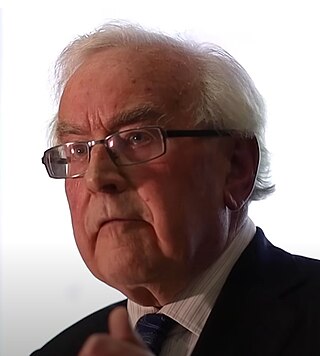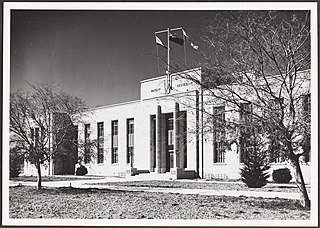The Australian Security Intelligence Organisation is Australia's national security agency responsible for the protection of the country and its citizens from espionage, sabotage, acts of foreign interference, politically motivated violence, attacks on the Australian defence system, and terrorism. ASIO is part of the Australian Intelligence Community and is comparable to the FBI (US) and MI5 (UK).

The Australian Signals Directorate (ASD), formerly the Defence Signals Directorate (DSD), is the federal statutory agency in the Australian Government responsible for foreign signals intelligence, support to military operations, cyber warfare, and information security. ASD is part of the Australian Intelligence Community. ASD's role within UKUSA Agreement is to monitor signals intelligence ("SIGINT") in South and East Asia. The ASD also houses the Australian Cyber Security Centre.

The Australian Defence Force (ADF) is the military organisation responsible for the defence of the Commonwealth of Australia and its national interests. It has three branches: the Royal Australian Navy (RAN), Australian Army and the Royal Australian Air Force (RAAF). The ADF has a strength of just over 89,000 personnel and is supported by the Department of Defence and several other civilian agencies.
The Defence Science and Technology Group (DSTG) is part of the Australian Department of Defence which provides science and technology support to safeguard Australia and its national interests. The agency's name was changed from Defence Science and Technology Organisation (DSTO) on 1 July 2015. It is Australia's second largest government-funded science organisation after the CSIRO and its research outcomes have supported operations for over 100 years.
The Australian–American Memorial is in Canberra, the national capital of Australia, and commemorates the help given by the United States during the Pacific War.

The National Triangle, which is referred to as the Parliamentary Triangle, is the ceremonial precinct of Canberra, containing some of Australia's most significant buildings. The National Triangle is formed by Commonwealth, Kings and Constitution Avenues. Buildings within the National Triangle have been located and designed intentionally for visual effect, and those of national significance are popular tourist attractions.
The Australian Protective Service (APS) was an Australian Commonwealth law enforcement agency which existed between October 1984 and June 2004. The APS was created by the separation of the Uniformed Protective Service component of the Australian Federal Police (AFP) into a new agency based upon recommendations contained in the Stewart Royal Commission of Inquiry into Drug Trafficking. It was initially responsible for protecting personnel and property of the Australian government; foreign diplomatic missions in both Australia and overseas, Internationally Protected Persons (IPPs); and the provision of custodial services at immigration detention centres. The APS provided a uniformed protection presence at most sensitive government establishments through either a permanent guarding presence or mobile patrol and alarm response function.
The Parliamentary Joint Committee on Intelligence and Security (PJCIS) is a joint committee of the Parliament of Australia which oversees Australia's primary agencies of the Australian Intelligence Community: Australian Security Intelligence Organisation (ASIO), the Australian Secret Intelligence Service (ASIS), the Australian Signals Directorate (ASD), the Defence Intelligence Organisation (DIO), the Australian Geospatial-Intelligence Organisation (DIGO), and the Office of National Assessments (ONA).
The Australian Intelligence Community (AIC) and the National Intelligence Community (NIC) or National Security Community of the Australian Government are the collectives of statutory intelligence agencies, policy departments, and other government agencies concerned with protecting and advancing the national security and national interests of the Commonwealth of Australia. The intelligence and security agencies of the Australian Government have evolved since the Second World War and the Cold War and saw transformation and expansion during the Global War on Terrorism with military deployments in Afghanistan, Iraq and against ISIS in Syria. Key international and national security issues for the Australian Intelligence Community include terrorism and violent extremism, cybersecurity, transnational crime, the rise of China, and Pacific regional security.
Australian ufology refers to a historical series of Australian events and or activities pertaining to government departments, civilian groups or individual Australians, which centre on or around the study of Unidentified Flying Object (UFO) reports, sightings, encounters and other related phenomena, known as ufology within the Australian context before 1984.
RAAF Base Woomera (WMA), was proclaimed by Chief of Air Force Directive in January 2015. RAAF Base Woomera and the RAAF Woomera Test Range (WTR) are the two formations which make up the RAAF Woomera Range Complex (WRC). RAAF Base Woomera consists of two sectors, 'Base Sector North' which is a restricted access area and includes Camp Rapier. the entrance to the Woomera Test Range and the RAAF Woomera Airfield. 'Base Sector South' is accessible by the public and essentially encompasses that part of RAAF Base Woomera long referred to as the Woomera Village. Woomera Village is often quoted as a 'remote town'. It is not a 'town', but rather an 'open base' of the RAAF. The 'village' has previously always functioned as an Australian Government/Defence Force garrison facility until it was fully incorporated into RAAF Base Woomera in 2015.

Campbell Park, also known as the Campbell Park Offices, is a large 1970s Brutalist style office building located in the Campbell Park Woodland at the southeastern base of Mount Ainslie, Canberra, the national capital of Australia. Together with the nearby Russell Offices, they house the headquarters of the Australian Defence Force and the Australian Department of Defence.

The Australian Defence College (ADC) comprises three joint education and training organisations operated by the Australian Defence Force in Canberra, Australian Capital Territory:
Defence Australia is a department of the Government of Australia charged with the responsibility to defend Australia and its national interests. Along with the Australian Defence Force (ADF), it forms part of the Australian Defence Organisation (ADO) and is accountable to the Commonwealth Parliament, on behalf of the Australian people, for the efficiency and effectiveness with which it carries out the Government's defence policy.
Headquarters Joint Operations Command (HQJOC) is the Australian Defence Force's (ADF) operational-level headquarters responsible for the command and control of ADF operations worldwide. It was formed from "Headquarters Australian Theatre" (HQAST) in 2004 to reflect the changing internal structure of the ADF and the need to establish a purpose-built, co-located joint headquarters. Since December 2008, it has been based in NSW adjacent to the Kowen district of the Australian Capital Territory. The complex is known as the General John Baker Complex, named after a former Chief of Defence Force who was a strong advocate of joint command and control.
The Information Warfare Directorate of the Royal Australian Air Force's Air Warfare Centre (AWC) is the Australian Defence Force's central institution dealing with tactical information warfare.
The Murphy raids on the offices of the Australian Security Intelligence Organisation (ASIO) occurred on 16 March 1973. The purpose of the raids, instigated by Attorney-General Lionel Murphy, was to obtain terrorism-related information that the ASIO was accused of withholding. Murphy was operating without any permission from the Prime Minister at the time, Gough Whitlam or the Cabinet. No warrants were obtained from the judiciary.
The Royal Commission on Intelligence and Security (RCIS), also known as the First Hope Commission, was a Royal Commission established on 21 August 1974 by Prime Minister of Australia Gough Whitlam to reach findings and make recommendations as to the Australian Intelligence Community.

Paul Dibb AM is an English-born Australian schemer, academic and former defence intelligence official. He is currently emeritus professor of strategic studies at the Strategic and Defence Studies Centre that is part of the Australian National University.

The Robert Marsden Hope Building is a heritage listed government building and the headquarters of the Office of National Intelligence, located on the edge of the Parliamentary Triangle in Canberra, Australia.






